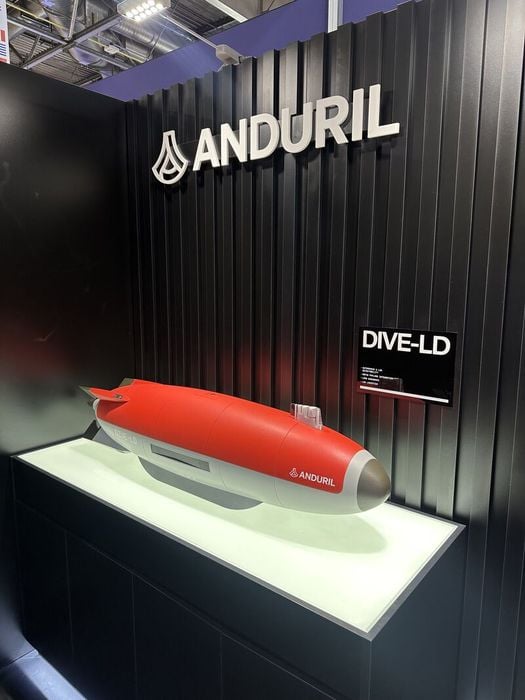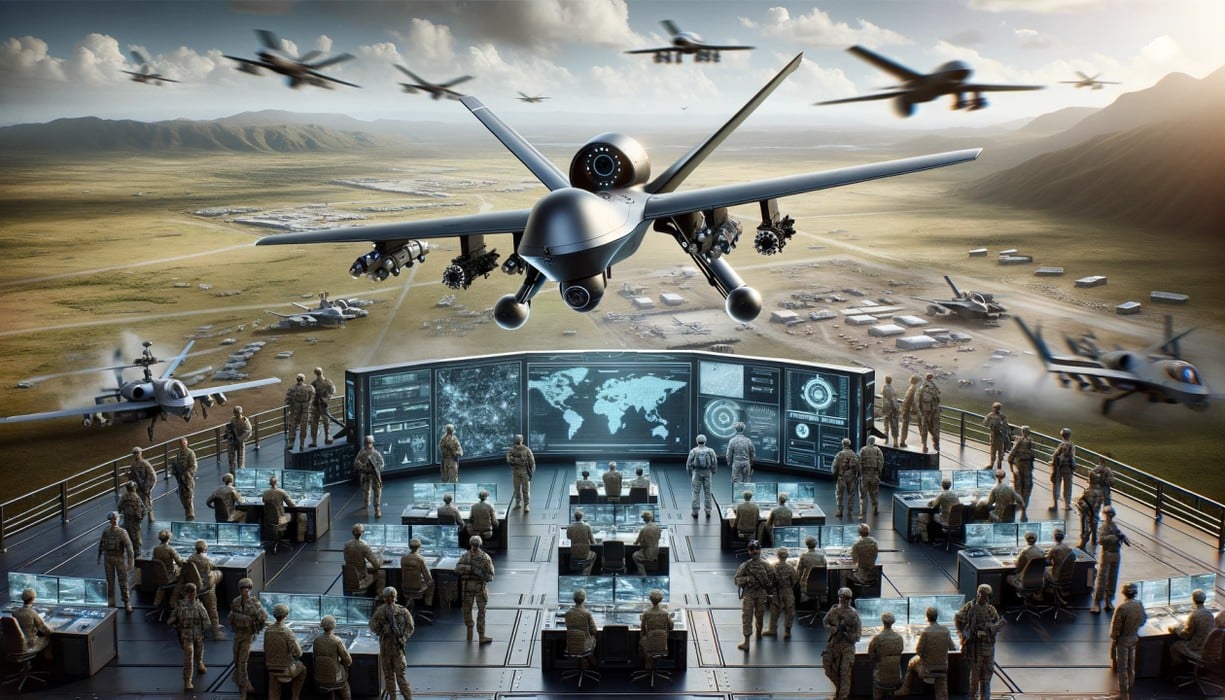
Charles R. Goulding and Preeti Sulibhavi analyze the revolutionary use of 3D printing at Anduril Industries, the latest venture of Oculus founder, Palmer Luckey.
Palmer Luckey, the tech visionary behind the Oculus virtual reality gaming system, has made waves in the technology and defense industries. After selling Oculus to Facebook (now Meta) for US$2 billion in 2014, Luckey continued to forge his own path, driven by a deep concern for global security issues. One of his primary concerns is China’s growing threat to Taiwan, particularly the possibility that China might seek to seize Taiwan’s semiconductor resources by 2027. This looming deadline has spurred Luckey to focus on developing cutting-edge defense technologies, particularly in the realm of autonomous vehicles.
Luckey’s new venture, Anduril Industries, is at the forefront of this effort. Founded in 2017, Anduril has quickly established itself as a major player in the defense sector, with a valuation of over US$14 billion. The company specializes in creating advanced defense systems, including autonomous drones, surveillance towers, and, most notably, unmanned submersibles. One of Anduril’s flagship products, the DIVE-LD (Low Drag), is a testament to the company’s innovative approach to modern warfare.

3D Printing: A Game-Changer for Anduril’s DIVE-LD
One of the most significant technologies employed by Anduril in the development of the DIVE-LD is 3D printing. This technology has revolutionized various industries by enabling the rapid prototyping and production of complex, lightweight, and durable components. In the defense industry, where the demands for high-performance materials and precise engineering are paramount, 3D printing has become an invaluable tool.
The DIVE-LD, an unmanned undersea vehicle (UUV), is designed for long-range missions and requires a construction that balances durability with lightweight efficiency. Traditional manufacturing methods often involve long lead times and high costs, particularly when producing parts with intricate geometries. However, 3D printing allows Anduril to overcome these challenges by enabling the production of complex components quickly and cost-effectively.
This all feeds into Anduril’s belief that the US military needs a large number of more sophisticated, inexpensive defense systems that can be effective over long stretches of ocean.
Lightweight and Durable Components
3D printing allows for the production of components with complex internal structures that are impossible or extremely difficult to achieve with traditional manufacturing methods. For the DIVE-LD, this means creating a hull and other critical parts that are both lightweight and incredibly strong. The ability to produce lightweight components is crucial for unmanned submersibles, which need to conserve energy for extended operations and maneuverability in challenging underwater environments.
Moreover, the materials used in 3D printing, such as high-performance polymers and metals, provide the durability required to withstand the harsh conditions of deep-sea missions. These materials can be precisely engineered at a molecular level, ensuring that the components can endure high pressure, corrosive saltwater, and mechanical stress over extended periods.
Rapid Prototyping and Iterative Design
Another significant advantage of 3D printing is the ability to rapidly prototype and iterate designs. In the defense industry, where innovation and responsiveness to new threats are critical, the ability to quickly develop, test, and refine new technologies can provide a significant strategic advantage.
For Anduril, 3D printing has enabled the company to rapidly develop prototypes of the DIVE-LD, test them in real-world conditions, and make necessary adjustments without the lengthy delays associated with traditional manufacturing. This iterative design process has allowed Anduril to optimize the DIVE-LD’s performance, ensuring that it meets the rigorous demands of modern warfare.

Anduril and the Future of Defense: Leveraging 3D Printing
Anduril’s use of 3D printing extends beyond the DIVE-LD. The company is actively exploring how this technology can be applied to other defense systems, including autonomous drones and surveillance platforms. The flexibility of 3D printing allows Anduril to create customized components for specific mission requirements, whether that involves reducing the weight of an aerial drone or enhancing the durability of a ground-based sensor.
One potential application of 3D printing in Anduril’s future projects is the production of modular components. In modern warfare, adaptability is key, and the ability to quickly modify or repair equipment in the field can be a decisive factor. 3D printing could enable Anduril to produce replacement parts or mission-specific modules on demand, even in remote or contested environments. This capability would reduce downtime and allow military forces to maintain their operational readiness under challenging conditions.
Strategic Advantages and Cost Savings
The strategic advantages of 3D printing in defense extend beyond the technical capabilities of the products themselves. The ability to produce parts on-demand, reduce supply chain dependencies, and lower production costs can significantly enhance the overall efficiency and effectiveness of defense operations.
For Anduril, these advantages translate into faster development cycles, greater flexibility in responding to new threats, and the ability to deliver cutting-edge technology to military customers at a competitive price. As defense budgets are increasingly scrutinized, the cost savings offered by 3D printing can make a critical difference in securing contracts and expanding market share.
3D Printing at Meta: Pioneering New Technologies
While Palmer Luckey’s views eventually diverged from those of Meta’s management, the company has continued to invest in advanced technologies, including 3D printing. Meta has explored 3D printing primarily within the context of its hardware development, particularly in the creation of prototypes for virtual reality (VR) devices and other consumer electronics.
Meta’s Reality Labs division, which focuses on the development of VR and augmented reality (AR) technologies, has utilized 3D printing to accelerate the prototyping process. By creating prototypes of VR headsets and other devices, engineers can quickly evaluate new designs, identify potential issues, and refine their products before moving to mass production. This approach not only speeds up the development process but also reduces costs by minimizing the need for expensive tooling and molds.
In addition to hardware prototyping, Meta has explored the use of 3D printing in creating custom components for its products. For example, the ergonomic design of VR headsets is crucial for ensuring user comfort during extended use. 3D printing allows Meta to experiment with different shapes, materials, and configurations to find the optimal design that balances comfort, weight, and durability.
Although Meta’s use of 3D printing is primarily focused on consumer electronics rather than defense technologies, the principles remain the same: rapid prototyping, iterative design, and the ability to produce complex, high-performance components are all essential for staying at the cutting edge of technology.
The Research & Development Tax Credit
The now permanent Research and Development (R&D) Tax Credit is available for companies developing new or improved products, processes and/or software.
3D printing can help boost a company’s R&D Tax Credits. Wages for technical employees creating, testing and revising 3D printed prototypes can be included as a percentage of eligible time spent for the R&D Tax Credit. Similarly, when used as a method of improving a process, time spent integrating 3D printing hardware and software counts as an eligible activity. Lastly, when used for modeling and preproduction, the costs of filaments consumed during the development process may also be recovered.
Whether it is used for creating and testing prototypes or for final production, 3D printing is a great indicator that R&D Credit-eligible activities are taking place. Companies implementing this technology at any point should consider taking advantage of R&D Tax Credits.
Conclusion
Palmer Luckey’s journey from the creator of Oculus to the founder of Anduril Industries highlights the transformative power of technology in both the commercial and defense sectors. By leveraging 3D printing, Anduril has positioned itself at the forefront of modern warfare, developing innovative solutions like the DIVE-LD that meet the complex demands of today’s military operations.
